Visit to SF Bay Area (Oct. 18-20): SFベイエリア訪問(10月18日~20日) [Photos/写真]
Visit to SF Bay Area (Oct. 18-20): SFベイエリア訪問(10月18日~20日)
Day 1: October 18(T) ; 1日目:10月18日(火)
Visiting Berkeley; バークレー訪問
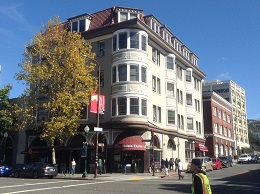
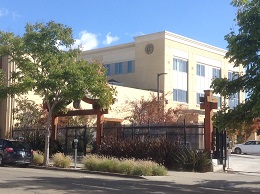
Visits: JSPS SF Office; 日本学術振興会オフィス(http://www.jspsusa-sf.org/)
Ryukoku Univ. Office; 龍谷大オフィス
(http://www.ryukoku.ac.jp/about/campus_traffic/rubec.html)
From Berkeley to Downtown SF; バークレーからダウンタウンSFへ
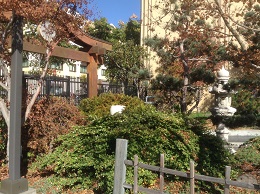
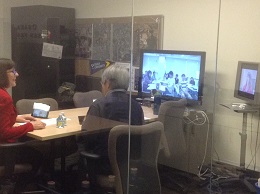
Visits: Osaka Univ. Office; 大阪大オフィス:遠隔講義 (http://osaka-u-sf.org/ja/)
Waseda Univ. Office; 早大オフィス (https://www.waseda.jp/inst/us-office/)
------------------------------------------------------------------------------------------
Day 2: October 19(W); 2日目:10月19日(水)
Visiting Stanford University; スタンフォード大学訪問
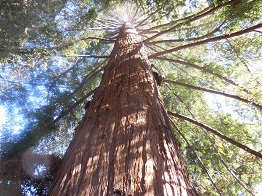
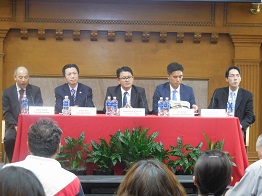
Stanford Seminar: セミナー参加:http://miyao-blog.blog.so-net.ne.jp/2016-10-20
Back to Downtown SF/JapanTown; ダウンタウンSFのジャパンタウン
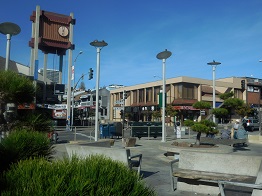
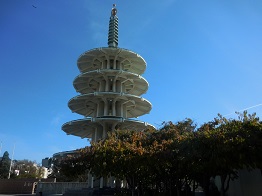
----------------------------------------------------------------------------------------
Day 3: October 20 (Th); 3日目:10月20日(木)
Drive down to San Jose (Campbell) ; サンノゼ(キャンベル)へ
Visit: Kyushu Univ. Office; 九州大オフィス
(http://www.isc.kyushu-u.ac.jp/california/)
Drive up to Alameda; アラミダへ
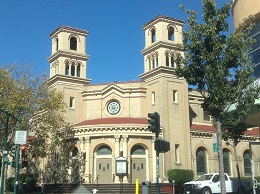
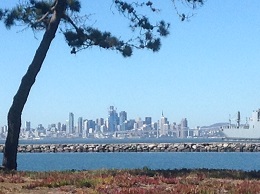
Visit: Fukuoka Inst. of Tech; 福岡工大オフィス
(http://www.fit.ac.jp/kyoiku/kokusai/network)
----------------------------------------------------------------------------------------
Day 1: October 18(T) ; 1日目:10月18日(火)
Visiting Berkeley; バークレー訪問


Visits: JSPS SF Office; 日本学術振興会オフィス(http://www.jspsusa-sf.org/)
Ryukoku Univ. Office; 龍谷大オフィス
(http://www.ryukoku.ac.jp/about/campus_traffic/rubec.html)
From Berkeley to Downtown SF; バークレーからダウンタウンSFへ


Visits: Osaka Univ. Office; 大阪大オフィス:遠隔講義 (http://osaka-u-sf.org/ja/)
Waseda Univ. Office; 早大オフィス (https://www.waseda.jp/inst/us-office/)
------------------------------------------------------------------------------------------
Day 2: October 19(W); 2日目:10月19日(水)
Visiting Stanford University; スタンフォード大学訪問


Stanford Seminar: セミナー参加:http://miyao-blog.blog.so-net.ne.jp/2016-10-20
Back to Downtown SF/JapanTown; ダウンタウンSFのジャパンタウン


----------------------------------------------------------------------------------------
Day 3: October 20 (Th); 3日目:10月20日(木)
Drive down to San Jose (Campbell) ; サンノゼ(キャンベル)へ
Visit: Kyushu Univ. Office; 九州大オフィス
(http://www.isc.kyushu-u.ac.jp/california/)
Drive up to Alameda; アラミダへ


Visit: Fukuoka Inst. of Tech; 福岡工大オフィス
(http://www.fit.ac.jp/kyoiku/kokusai/network)
----------------------------------------------------------------------------------------
Stanford Event: Nuclear Safety And Security In Northeast Asia: A Panel Discussion [Report]
Nuclear Safety And Security In Northeast Asia: A Panel Discussion (October 19, 2016)
Sponsored by: Shorenstein Asia-Pacific Research Center
Date/Time: October 19(W), 12:00-1:30pm
Venue: Bechtel Conference Center, Encina Hall, Stanford
Moderator:
Takeo Hoshi, Henri H. and Tomoye Takahashi Senior Fellow in Japanese Studies, Freeman Spogli Institute for International Studies
Panelists:
Liyou Zha, Deputy Consul General of the People Public of China, San Francisco
Shouichi Nagayoshi, Deputy Consul General of Japan, San Francisco
Jimin Kim, Deputy Consul General of the Republic of Korea, San Francisco
Phillip Lipscy, TheThomas Rohlen Center Fellow, Freeman Spogli Institute for International Studies, Associate Professor of Political Science
Photo:
Prof. T. Hoshi, Mr. L. Zha, Mr. S. Nagayoshi, Mr. J. Kim and Prof. P. Lipscy
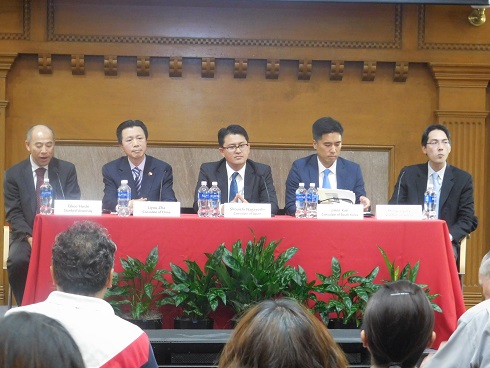
Webpage: https://events.stanford.edu/events/628/62811/
"Northeast Asia is now a central arena to determine the future of nuclear safety and security. The Fukushima nuclear accident, and its ongoing aftermath, is at the forefront of the debate over the utility of nuclear energy in resolving global issues of climate change and energy security. And North Korea’s headlong rush towards acquisition of nuclear weapons and delivery systems has sparked talk of going nuclear in both South Korea and China and discussion over how to provide extended deterrence, including the role of missile defense."
Review:
When diplomats stationing in a local city like San Francisco talk about national and international issues such as nuclear safety and security, all you can expect is what may be called "diplomatic talks." It was no exception this time, as the three diplomats claimed that their governments were doing their best in achieving "nuclear safety and security" by cooperating among the three countries, even in dealing with the "trust deficit" issue about nuclear safety and the "North Korea" issue about nuclear security.
Whenever they had to mention some unresolved problems, the key word "challenge" was used to avoid admission of inabilities or even failures in addressing such problems.
It turned out to be so obviously "diplomatic," when the three deputy consuls responded to the question from the floor, asking how their governments are dealing with the public's strong opposition to nuclear power, that is, the problem of seemingly increasing trust deficit: the Korean deputy consul said something like "educating people," and the Japanese deputy consul emphasized "dialogue with the public," while the Chinese deputy consul somewhat surprisingly that "the government listens and can change its mind in building nuclear plants," although that could happen only in some neighborhoods, but certainly not for the nation as a whole, as the Chinese diplomat himself initially presented that there were 27 nuclear power plants currently in operation, and 25 more under construction, which looks like a very aggressive pro-nuclear power policy.
Prof. Lipscy raised an interesting point regarding the possible implications of changing political atmosphere and shifting public opinions in the US regarding nuclear proliferation in Asia, but unfortunately there was no response from any panelist or even from the floor. Probably, we need another round of panel discussion, preferably by specialists, on such an issue.
(T. Miyao)
References:
Stanford Colloquium:Japan's Great Earthquake & Nuclear Disaster: 5 Years Later" (March 10, 2016)
http://miyao-blog.blog.so-net.ne.jp/2016-03-11
--------------------------------------------------------------------------------------------
Sponsored by: Shorenstein Asia-Pacific Research Center
Date/Time: October 19(W), 12:00-1:30pm
Venue: Bechtel Conference Center, Encina Hall, Stanford
Moderator:
Takeo Hoshi, Henri H. and Tomoye Takahashi Senior Fellow in Japanese Studies, Freeman Spogli Institute for International Studies
Panelists:
Liyou Zha, Deputy Consul General of the People Public of China, San Francisco
Shouichi Nagayoshi, Deputy Consul General of Japan, San Francisco
Jimin Kim, Deputy Consul General of the Republic of Korea, San Francisco
Phillip Lipscy, TheThomas Rohlen Center Fellow, Freeman Spogli Institute for International Studies, Associate Professor of Political Science
Photo:
Prof. T. Hoshi, Mr. L. Zha, Mr. S. Nagayoshi, Mr. J. Kim and Prof. P. Lipscy

Webpage: https://events.stanford.edu/events/628/62811/
"Northeast Asia is now a central arena to determine the future of nuclear safety and security. The Fukushima nuclear accident, and its ongoing aftermath, is at the forefront of the debate over the utility of nuclear energy in resolving global issues of climate change and energy security. And North Korea’s headlong rush towards acquisition of nuclear weapons and delivery systems has sparked talk of going nuclear in both South Korea and China and discussion over how to provide extended deterrence, including the role of missile defense."
Review:
When diplomats stationing in a local city like San Francisco talk about national and international issues such as nuclear safety and security, all you can expect is what may be called "diplomatic talks." It was no exception this time, as the three diplomats claimed that their governments were doing their best in achieving "nuclear safety and security" by cooperating among the three countries, even in dealing with the "trust deficit" issue about nuclear safety and the "North Korea" issue about nuclear security.
Whenever they had to mention some unresolved problems, the key word "challenge" was used to avoid admission of inabilities or even failures in addressing such problems.
It turned out to be so obviously "diplomatic," when the three deputy consuls responded to the question from the floor, asking how their governments are dealing with the public's strong opposition to nuclear power, that is, the problem of seemingly increasing trust deficit: the Korean deputy consul said something like "educating people," and the Japanese deputy consul emphasized "dialogue with the public," while the Chinese deputy consul somewhat surprisingly that "the government listens and can change its mind in building nuclear plants," although that could happen only in some neighborhoods, but certainly not for the nation as a whole, as the Chinese diplomat himself initially presented that there were 27 nuclear power plants currently in operation, and 25 more under construction, which looks like a very aggressive pro-nuclear power policy.
Prof. Lipscy raised an interesting point regarding the possible implications of changing political atmosphere and shifting public opinions in the US regarding nuclear proliferation in Asia, but unfortunately there was no response from any panelist or even from the floor. Probably, we need another round of panel discussion, preferably by specialists, on such an issue.
(T. Miyao)
References:
Stanford Colloquium:Japan's Great Earthquake & Nuclear Disaster: 5 Years Later" (March 10, 2016)
http://miyao-blog.blog.so-net.ne.jp/2016-03-11
--------------------------------------------------------------------------------------------
書評:櫛田健児『シリコンバレー発アルゴリズム革命の衝撃』 [Review]
書評:櫛田健児『シリコンバレー発アルゴリズム革命の衝撃』
書名:『シリコンバレー発アルゴリズム革命の衝撃』
著者:櫛田健児(スタンフォード・シリコンバレーNew Japan Project プロジェクトリーダー)
出版社、年月日:朝日新聞出版、2016年9月30日
書評:(Amazonへの投稿:https://www.amazon.co.jp/dp/4022514124)
「シリコンバレー詣で」をする人のための必読書」: TM
その本の価値は、それがターゲットとする読者を特定しなければ決まらない。本書は主に最近急増している「シリコンバレー詣で」をする日本人、特にビジネス、大学、役所などの関係者に向けて書かれていると思われる。そのような人たちが必ずといってよいほど訪れるスタンフォード大で受け入れの窓口の役割を果たしているのが、著者に他ならないからである。
その視点からいえば、本書はシリコンバレー訪問のための必読書といえる。しかも単なる入門書ではなく、日本にいては見落としがちなシリコンバレー成功のポイントの指摘が随所でなされている。例えば、第1章にある「スケールしないビジネスは生き残れない」は、スケールという概念の重要性を理解しない日本企業への警告である。
そのようなコンテキストから、本書の価値を決めるのは何と言っても最新の動向と具体例に基づいて著者が強く感じている提言を集めた第5章「日本企業がこれからすべきこと」であろう。シリコンバレーで生き残り成功するために最低限必要なもの、それはシリコンバレー流の「オープンイノベーション」であり、「人脈」であり、「トップのコミット」であり、「デザイン思考」であることを、日本企業や起業家の実名入りの具体例で説明している結論部分は圧巻であり、これまで日本語で書かれたシリコンバレーに関するどの著書や資料よりも価値の高いものであるといえる。
---------------------------------------------------------------------------------------
書名:『シリコンバレー発アルゴリズム革命の衝撃』
著者:櫛田健児(スタンフォード・シリコンバレーNew Japan Project プロジェクトリーダー)
出版社、年月日:朝日新聞出版、2016年9月30日
書評:(Amazonへの投稿:https://www.amazon.co.jp/dp/4022514124)
「シリコンバレー詣で」をする人のための必読書」: TM
その本の価値は、それがターゲットとする読者を特定しなければ決まらない。本書は主に最近急増している「シリコンバレー詣で」をする日本人、特にビジネス、大学、役所などの関係者に向けて書かれていると思われる。そのような人たちが必ずといってよいほど訪れるスタンフォード大で受け入れの窓口の役割を果たしているのが、著者に他ならないからである。
その視点からいえば、本書はシリコンバレー訪問のための必読書といえる。しかも単なる入門書ではなく、日本にいては見落としがちなシリコンバレー成功のポイントの指摘が随所でなされている。例えば、第1章にある「スケールしないビジネスは生き残れない」は、スケールという概念の重要性を理解しない日本企業への警告である。
そのようなコンテキストから、本書の価値を決めるのは何と言っても最新の動向と具体例に基づいて著者が強く感じている提言を集めた第5章「日本企業がこれからすべきこと」であろう。シリコンバレーで生き残り成功するために最低限必要なもの、それはシリコンバレー流の「オープンイノベーション」であり、「人脈」であり、「トップのコミット」であり、「デザイン思考」であることを、日本企業や起業家の実名入りの具体例で説明している結論部分は圧巻であり、これまで日本語で書かれたシリコンバレーに関するどの著書や資料よりも価値の高いものであるといえる。
---------------------------------------------------------------------------------------
Debate Manual: ディベートの手引き [ビデオ講義]
Debate Manuel: ディベートの手引き
"Debate Manual: How to Conduct Debate in Classroom" (in English)
Explained and illustrated by Takahiro Miyao
https://youtu.be/xfLQAUzikkQ
「ディベートの手引き:授業でディベートを行う方法」(日本語)
説明・絵:宮尾尊弘
https://youtu.be/4V9tlXwtypo
--------------------------------------------------------------------
"Debate Manual: How to Conduct Debate in Classroom" (in English)
Explained and illustrated by Takahiro Miyao
https://youtu.be/xfLQAUzikkQ
「ディベートの手引き:授業でディベートを行う方法」(日本語)
説明・絵:宮尾尊弘
https://youtu.be/4V9tlXwtypo
--------------------------------------------------------------------



